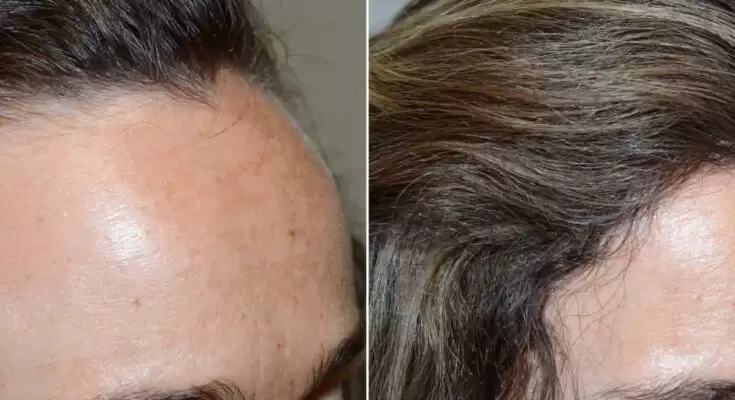
While hair transplant procedures have long been associated with men, there has been a growing realisation that women face the challenges of hair thinning and loss. Women also need effective and personalised solutions to address their hair restoration needs, whether due to genetic factors, hormonal changes, medical conditions, or other causes.
Whether you’re considering a hair transplant in London for yourself or seeking information for a loved one, we aim to provide you with a well-rounded understanding of the process. Empowered with knowledge, you can make informed decisions about the best path forward for your unique situation.
So, let’s embark on this enlightening journey together, exploring the world of women’s hair transplant in the UK and discovering how modern advancements are reshaping how we approach hair restoration.
Table of Contents
What is a female hair transplant?
Female hair transplant surgery requires appropriate planning and consideration, as women’s hair loss patterns can differ from those of men. Women often experience diffuse hair thinning, whereas men’s hair loss usually follows a more defined way of receding hairline and balding crown. An experienced surgeon will consider these nuances when designing the transplant plan.
The specific areas for treatment in female hair transplants can differ based on the root cause of the hair loss. While some may focus on hairline and temple restoration, others might necessitate a more comprehensive approach to address widespread hair thinning.
Hair transplant procedures should only be carried out by proficient surgeons well-versed in the intricacies of women’s hair transplant techniques. For choosing a hair transplant surgeon, you should carefully examine before and after hair transplant results in the UK as it is the crucial surgery you will be going through.
Causes of Hair Loss in Women
It is a significant question that every woman wants to know, why are they facing hair loss problems? Understanding the underlying causes is essential for determining the most appropriate treatment approach. People still need to discover the answer to this question, and much research is happening. At the same time, there are some common reasons why female hair loss occurs.
- Genetic Factors (Androgenetic Alopecia): Like men, hereditary factors can significantly contribute to hair loss. Androgenetic alopecia can result in hair thinning on the crown and upper part of the scalp.
- Hormonal Fluctuations: Variations in hormone levels due to circumstances like pregnancy, childbirth, menopause, and specific medical conditions can initiate hair loss.
- Medical Issues: Specific medical conditions can lead to hair loss among women. Autoimmune disorders like alopecia areata can result in patchy hair loss, whereas medical treatments such as chemotherapy can induce temporary hair loss.
- Thyroid Disorders: Both hyperthyroidism (overactive thyroid) and hypothyroidism (underactive thyroid) can instigate hair loss. Thyroid hormones substantially influence the regulation of hair growth cycles.
- Inadequate Nutrition: A deficiency in essential nutrients like iron, zinc, biotin, calcium, and protein can lead to hair thinning. Ensuring proper nutrition is crucial for fostering healthy hair growth.
- Stress and Emotional Elements: Stress, anxiety, and emotional factors can disturb the hair growth cycle, triggering hair shedding. Conditions like telogen effluvium result in transient hair loss due to stressful events.
- Hairstyling Practices: Frequently using tightly styled hairstyles like braids, ponytails, and extensions can apply tension on hair follicles, potentially leading to traction alopecia.
- Medications: Certain medications, including those for chemotherapy, radiation, birth control, and specific anticoagulants, can result in hair loss as a side effect.
- Natural Aging Process: Hair tends to become thinner as part of the natural ageing process. Hair growth cycles shorten over time, contributing to reduced hair density.
Hair Loss Treatment Approaches
Several diverse hair transplant techniques are tailored for women, each with distinct benefits and considerations. Here are critical types of hair transplant techniques commonly employed for women:
Follicular Unit Transplantation (FUT)
FUT involves surgically extracting a thin strip of scalp from the donor area, typically at the back of the head. Subsequently, this strip is divided into individual follicular units containing one to four hairs. These units are then transplanted into the targeted recipient area. FUT suits women with more extensive hair loss, often generating numerous grafts within a single session. However, it leaves a visible linear scar at the donor site.
Follicular Unit Extraction (FUE)
FUE is a procedure with minimal invasiveness involving the extraction of individual hair follicles from the donor region using a specialised instrument. These extracted follicles are then transplanted into the recipient area. FUE is renowned for its precision, minimal scarring, and adaptability to harvesting hair from various body regions if necessary. It is a preferred option for women desiring shorter hairstyles or aiming to avoid noticeable linear scars.
Conclusion
The hair transplant cost in London over the top but assuring that you are getting the best treatment is important. You will also get the finance options at the reputed hair transplant clinics. Mittal Hair Clinic is providing the best hair transplant facilities along with the best surgeon Dr. Manish Mittal. He conducts only one surgery in a day so that every patient gets appropriate attention. Also, the clinic is offering the best price for their patients.







